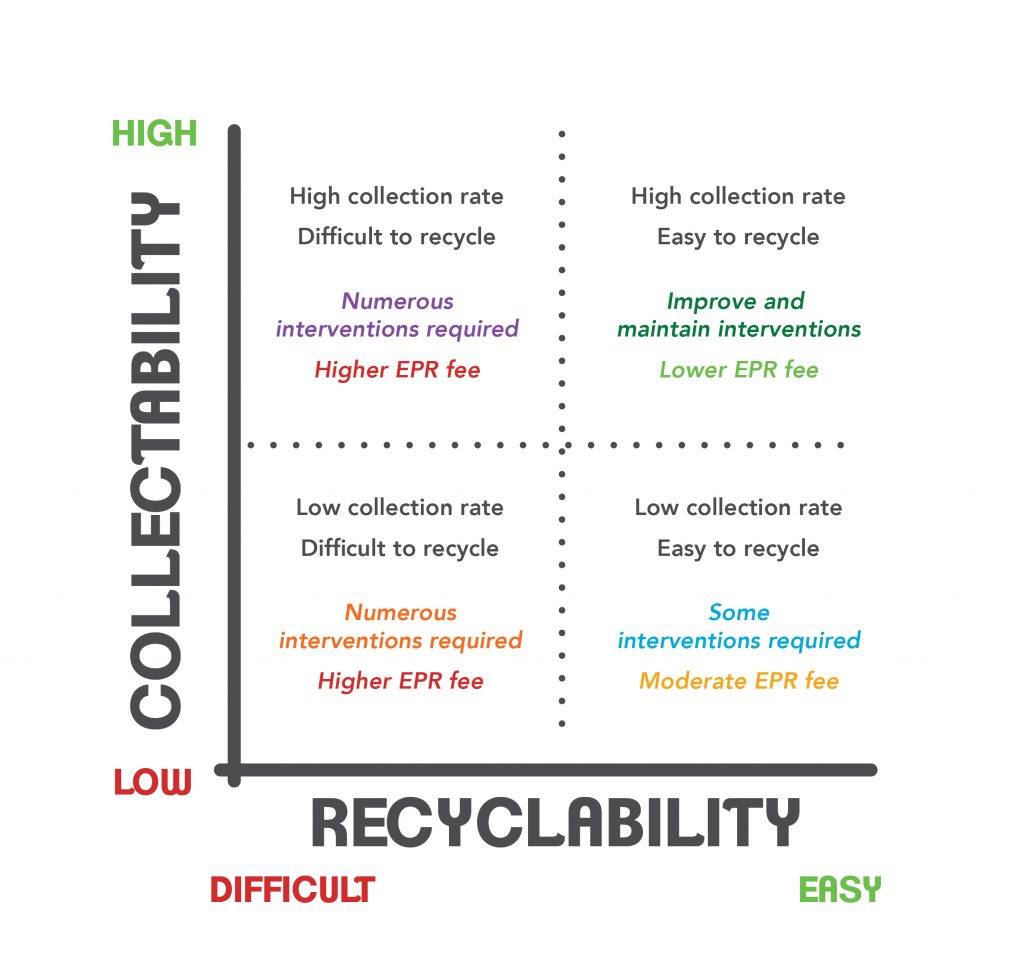In its bid to develop, implement and manage the national EPR scheme of the paper and paper packaging sectors such as paper sacks, liquid board packaging, packaging papers, office papers, magazines, newsprint and labels, Fibre Circle aims to improve the recovery and recycling of these items and help value chain role players to develop more products from recycled paper fibre and resulting non-paper waste streams that are commercially viable in their own right.
New research has found that paper fibres can be recycled up to 25 times, whereas previously it was thought to be six to seven times. Importantly, by keeping paper out of landfills and in the recycling loop, we can keep carbon locked in the paper fibres for longer and reduce the greenhouse gas emissions that cause climate change. n
What other opportunities do the EPR regulations create?
As many companies faces similar collection and recovery of their ‘products/packaging’ challenges, they can find a shared solution by collaborating in a pre-competitive way.
Opportunities also exist for recycling methods to improve, especially for products currently considered challenging to recycle. Additionally, new packaging opportunities may arise through design research and certain sectors could switch from current specific packaging materials to more environmentally-friendly options in the future.
What challenges have emerged for producers from the EPR regulations?
Currently there are two main challenges we are working to address, namely: the recyclability and collectability of some products and collecting accurate data for monitoring, auditing and reporting purposes.

How ready do you believe your members are for mandatory EPR?
Most members are happy to comply once they have understood the reasons for EPR. We have engaged often with members both individually and collectively to explain the EPR regulations and assisted with specific industry issues where necessary. It is important to recognise that in some cases the environmental/sustainability case will supersede the business case until critical mass is reached.
Each EPR scheme is a work in progress – we are flying the plane while we are building it – so there will be some teething problems. Companies should be proud of their contributions and view registration and compliance as a mark of integrity and credibility. We have also noticed that more brand owners and retailers are requesting a certificate of compliance from their suppliers.


How are Fibre Circle and municipalities working together to help improve collection and recycling infrastructure to make target achievements easier?
Although this remains a challenge, some municipalities understand their role in EPR and collaborate with PROs. Due to the overarching nature of EPR in that it affects a number of packaging types, a PRO Alliance has been registered to collaborate with government, including municipalities and other common stakeholders. The alliance comprises representation from Fibre Circle, the Glass Recycling Company, MetPac-SA, the Aerosol Manufacturers Association of South Africa, PETCO and Polyco.
In terms of the EPR roll-out, Fibre Circle has a phased municipal approach for implementing projects over the next five years, starting with Ekurhuleni Metro. For instance, this will entail establishing more bring back centres for consumers, specific sector collection and recycling interventions and supporting local businesses and entrepreneurs through training courses and awareness-raising initiatives.

What changes can consumers make to assist waste pickers and the association in meeting targets?
First and foremost, better separation-at-source, that is in homes, at schools and businesses. Because separation-at-source is practised on a small scale in SA, consumers can assist waste pickers by cleaning and placing their recyclables in a separate bag on
their pavements (where applicable). This will enable access for waste pickers to cleaner recyclables and more efficiency as they move through suburbs and industrial areas.
In addition, we need to establish better infrastructure that supports the convenience factor for consumers before we can begin addressing behavioural changes. It’s very frustrating for consumers if they are told something is recyclable, but there is no means to have it collected or drop it off to ensure it will get to the recycling mill.
PROs will also continue with creating awareness among identified stakeholders in the value chain, including consumers. Consumers should question the collectability and recyclability of the packaging used to pack and protect the products they buy.
Collection and recycling targets for newspapers will increase from 45% to 65% and from 35% to 55% respectively over the five-year period, while for magazines, office, graphic and mixed papers the collection targets will grow from 35% to 42% and recycling targets from 33% to 40%. For corrugated/kraft board the collection targets will escalate from 60% to 80% and the recycling targets from 58% to 78%, while for liquid board packaging, paper sacks and label backing paper and waste matrix collection targets will increase from 10% to 30% and recycling targets from 5% to 25%.”
What role do waste pickers play in reaching certain targets and how will EPR schemes help to incorporate them more formally into the value chain?
There is certainly potential for waste pickers to collect more recyclable materials, when consumers assist through separation-at-source and PROs assist with collections as transport is always a huge challenge.
A key aspect of the EPR legislation is to register waste pickers and compensate them with a ‘service fee’. PROs in conjunction with government and waste picker associations are currently debating possible solutions.
There are a number of projects in place, which will eventually be combined to form part of the overarching strategies of the PRO Alliance and its desired outcomes.
What impact do you anticipate local and global issues will have as everyone strives towards reaching mandatory EPR targets?
It’s difficult to predict the future as the lagging economic and social impacts of the Covid-19 pandemic, the oil price and global paper shortages all play a role. Efforts are also being made to ensure as much wastepaper as possible remains in the country as a source of material for local mills. This is vital as it has a direct influence on manufacturing capabilities, job opportunities and building a sustainable economic model.
Furthermore, EPR is here to stay, and all efforts by PROs to facilitate and enable value chain stakeholders to reach their targets will prevail.
Click here to read this article in the E-mag.









![02 CAE 20th Anniversary [2018] ED](https://www.packagingmag.co.za/wp-content/uploads/2024/11/thumbs/epic-120x86/02_CAE-20th-Anniversary-2018-ED-120x86.jpg)
